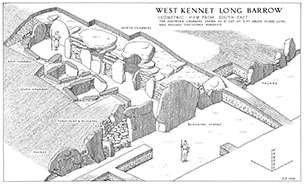Crossref Citations
This article has been cited by the following publications. This list is generated based on data provided by Crossref.
Opitz, Rachel S.
and
Johnson, Tyler D.
2016.
Interpretation at the Controller’s Edge: Designing Graphical User Interfaces for the Digital Publication of the Excavations at Gabii (Italy).
Open Archaeology,
Vol. 1,
Issue. 1,
Romankiewicz, Tanja
2018.
ROOM FOR IDEAS: TRACING NON-DOMESTIC ROUNDHOUSES.
The Antiquaries Journal,
Vol. 98,
Issue. ,
p.
17.
Banning, Edward B.
2020.
The Archaeologist’s Laboratory.
p.
349.
Bystrom, Jonas
Taher, Taher E.
and
Mageed, Rizgar A.
2020.
Metabolic Pathways Underpinning Lymphocyte Differentiation and Responses in Health and Disease.
Immunometabolism,
Vol. 2,
Issue. 3,
Morgan, Colleen
Petrie, Helen
Wright, Holly
and
Taylor, James Stuart
2021.
Drawing and Knowledge Construction in Archaeology: The Aide Mémoire Project.
Journal of Field Archaeology,
Vol. 46,
Issue. 8,
p.
614.
Muenster, Sander
Bruschke, Jonas
Maiwald, Ferdinand
and
Kleiner, Constantin
2021.
Software and Content Design of a Browser-based Mobile 4D VR Application to Explore Historical City Architecture.
p.
13.
Muenster, Sander
2022.
Digital 3D Technologies for Humanities Research and Education: An Overview.
Applied Sciences,
Vol. 12,
Issue. 5,
p.
2426.
Huggett, Jeremy
2023.
Discourse and Argumentation in Archaeology: Conceptual and Computational Approaches.
p.
159.
Kennedy, Hailey
and
McKenzie, Hugh
2023.
Art and Archaeology.
Pathways,
Vol. 4,
Issue. 1,
p.
27.
Münster, Sander
Maiwald, Ferdinand
Bruschke, Jonas
Kröber, Cindy
Sun, Ying
Dworak, Daniel
Komorowicz, Dávid
Munir, Iqra
Beck, Clemens
and
Münster, Dora Luise
2024.
A Digital 4D Information System on the World Scale: Research Challenges, Approaches, and Preliminary Results.
Applied Sciences,
Vol. 14,
Issue. 5,
p.
1992.



